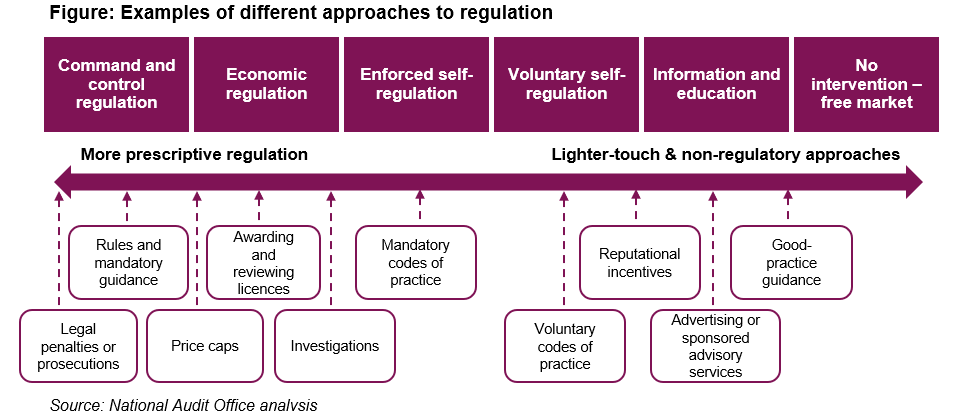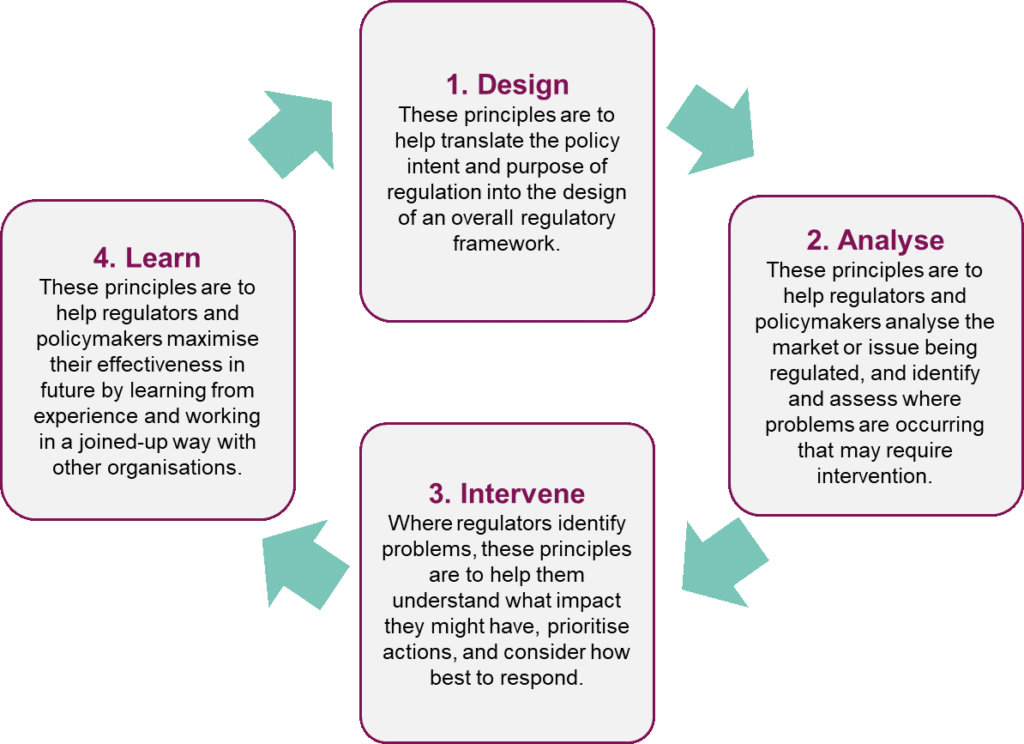Regulation impacts all our lives in many ways. Where we live and work, how we travel and communicate, the food we eat, the gadgets we buy, the banks we use, the water and energy we run our homes with. All of these places, goods and services, and more, are regulated.
We don’t generally notice the business of regulation happening in our daily lives. But when regulation fails, it can have serious consequences for our finances or safety, the economy as a whole, or the environment. Some high-profile disasters in recent years are often described as regulatory failures: the explosion at the Buncefield oil terminal in 2005, the financial and banking crisis in 2008, the Deepwater Horizon pollution disaster in 2010, the Grenfell fire in 2017, and the list goes on.
As well as minimising the risk of failures like these, good regulation can be used to achieve a range of different aims and opportunities. It can support innovation, make workplaces safer, or help to keep essential services affordable. In a modern, mixed economy, like the UK, regulation is used in most areas of public policy, from education, healthcare and charities to transport, food, communications, utilities and employment.
What does good regulation involve?
It’s one thing to say what regulation is supposed to achieve, and quite another to make it work in practice. Being in the NAO’s Regulation team, we’re quite often asked: “what does good regulation actually look like?”. This question comes from regulators and policymakers, but it also comes from other people and organisations interested in making regulation work well, such as charities and trade bodies. And it’s not a simple question to answer, as much as we’d like it to be, because regulation can take different forms and exist for different purposes. Regulatory interventions vary, and most regulators and government departments will use a variety of approaches.

At one end of the spectrum are essentially unregulated, free markets where primarily the courts are the arbiter of any disputes. At the other end are areas with particular risks, such as the nuclear and pharmaceutical sectors, that have more prescriptive, rules-based systems of regulation. Between these lies a rich landscape of more principles-based approaches, varying from providing guidance and reputational incentives (for example, performance league tables), through various forms of self-regulation and codes of practice, to licensing regimes and the regulation of prices.
Despite this variety our work on regulation in the past decade has identified common themes and challenges that come up time and time again, such as the use of data to identify problems, how regulation is funded, or how regulators know whether they’re actually doing a good job or not. Based on this experience, we’ve published a good practice guide setting out broad principles of effective regulation, illustrated by case studies or further guidance for each principle. Our aim is to support policymakers, regulators and other stakeholders to design and implement regulation in a way that is effective at achieving what it is supposed to, whether this is protecting people and businesses, supporting economic growth, adapting to changes from EU Exit and technological developments, or safeguarding the environment and pursuing the priorities and challenges of the government’s net zero agenda.
The learning cycle
At the heart of our guide is a ‘learning cycle’ for assessing how well regulators and policymakers are applying the principles. Regulation is rarely a single programme of work with a simple beginning, middle and end, but tends to be an ongoing process of designing a regulatory framework, analysing what is needed, intervening, and then learning from experience in order to do things better in the future. If any one of these elements is overlooked there’s a risk that it can undermine the purpose and effectiveness of the regulatory framework.

When creating or making changes to a regulatory system, all aspects should be considered upfront – for example, if you don’t plan how you will measure the impact of changes, you probably won’t be collecting the data you’ll need later on. But each of the four stages has its own focus:
- The Design stage principles – such as objectives, powers, funding and accountability – are the most crucial to get right from the start. They help translate the policy intent into the design of a regulatory regime, and can be costly or disruptive to change later if they require new legislation.
- The Analyse stage is about identifying areas that present risks or opportunities, engaging with stakeholders to understand needs and priorities, and establishing what capacity is needed to respond appropriately. For example, the way data and intelligence are analysed is essential in assessing risks, identifying problems and targeting activities and resources.
- The Intervene stage principles are intended to help regulators intervene effectively by understanding what impact their actions might have, prioritising issues, and considering how best to respond in a proportionate, consistent and timely way.
- Finally, the Learn stage is about regulators, policymakers and others working collaboratively to measure progress, understand the real-world impact of interventions, and learn from experience to maximise effectiveness in the future.
We’ll continue to use our work across government to share principles, lessons and good practice, and we welcome an comments you may have.




